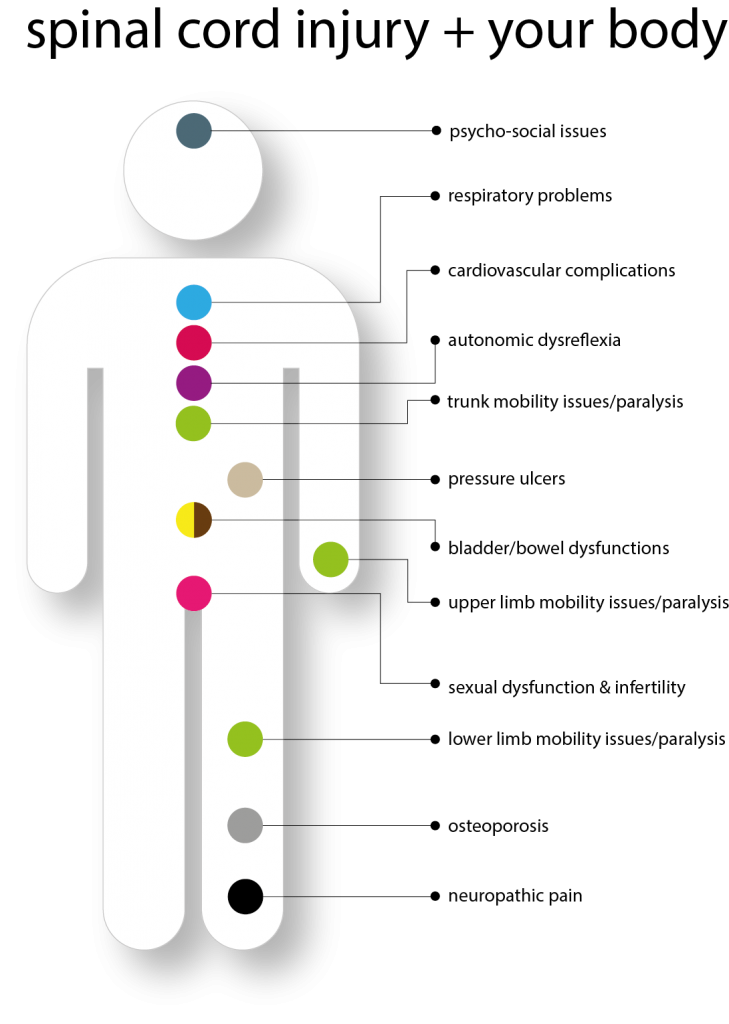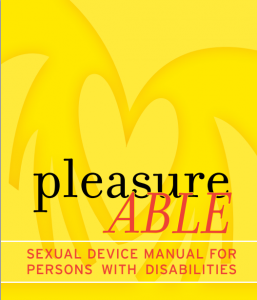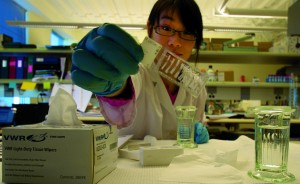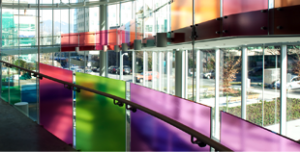Spinal cord injury
1. How does the spinal cord work?
2. What happens when the spinal cord is injured?
3. What are stem cells and how do they relate to SCI?
4. What progress have we made with stem cells and what is currently being done with them?
5. Is it safe to partake in stem cell research studies or clinical trials?
6. Where can I sign up to participate in clinical trials?
7. What are some major health consequences for people with SCI?
8. How long will it take before there’s a cure for SCI?
9. How is sexuality affected by SCI?
10. What resources are available for people with SCI?
ICORD
1. What does ICORD stand for?
2. What type of research happens at ICORD?
3. Can I participate in any research studies or clinical trials?
4. What facilities at ICORD or the BSCC are available for public use?
5. What is the difference between an ICORD Principal Investigator, Investigator, and an Associate Member?
6. How can I contribute to ICORD?
7. I have a spinal cord injury and would like some medical advice. Who can I speak to about this?
8. How can I stay updated with spinal cord injury research and ICORD news & events?
Blusson Spinal Cord Centre (BSCC)
1. Who designed the Blusson Spinal Cord Centre?
2. Who are the Blussons?
3. Who works in the BSCC?
4. How was the building funded?
5. How long is the ramp in the BSCC atrium?
6. Why is there coloured glass on the ramp?
7. What makes the building accessible for people with a physical disabilities?
8. What is on the fourth and fifth floors?
9. Can I see one of the doctors at the Spine Clinic?
10. Where can I park at the BSCC?
Physical Activity Research Centre (PARC)
For all PARC related questions, please see PARC Frequently Asked Questions.
————————————————————————–
Spinal Cord Injury
1. How does the spinal cord work?
The spine is comprised of the spinal column and the spinal cord. The spinal column consists of 31 vertebrae bones, including 7 cervical vertebrae, 12 thoracic vertebrae, 5 lumbar vertebrae, 5 sacral vertebrae, and 2 fused coccygeal vertebrae. These vertebrae are stacked on top of one another and have an enclosed opening (vertebral foramen), where the spinal cord runs.
The spinal cord is a bundle of nerves that extends from the brain and down the vertebral foramen of the vertebrae bones. These nerves extend down from the brain and branch out peripherally in the body between each vertebrae. They are responsible for transmitting signals from the brain to the body and vice versa. These signals may be the brain telling a body part how to move; they may also be signals from the body transmitting a feeling or sensation (such as heat or pain) to the brain.
Thus, the spinal cord acts as a communication pathway for signals and messages between the brain and the other parts of the body.
2. What happens when the spinal cord is injured?
The cause and location of a spinal cord injury (SCI) can vary, as damage can occur from a traumatic injury or from a disease affecting the vertebral column or spinal cord. SCI are often caused by trauma, such as a broken neck or back, injuries arising from motor vehicle accidents, sport injuries, workplace accidents, falls, or complications following surgery. SCI can also arise from non-traumatic sources or injury, including infection of the cells in the nerves, cysts or tumours pressing on the spinal cord, or congenital medical conditions (such as spina bifida).
In some cases, the vertebrae is fractured by trauma and will pinch the spinal cord nerve pertaining to the vertebrae number,causing it to become swollen or bruised. An injury or a disease may also cause the spinal cord and its nerve fibres to tear. As a result of an injury, the nerve fibres between the vertebral bones sending messages between the brain and the body will be affected, resulting in some loss of sensory, motor, or autonomic control below the level of where the spinal cord is injured. After a SCI, nerves above the level of injury will retain function, whereas the nerves from the point of injury and below can be severely impacted. The level of injury is the point on the individual’s spinal cord after which or below which there is a decrease or absence of feeling and/or movement.

Types of traumatic SCI (from left to right):
Contusion: bruising of the spinal cord
Dislocation: disarrangement in the normal relationships of the vertebrae bone
Distraction: separated or pulled apart vertebrae bones of the spinal column
Paraplegia is a term to described an individual who has lost feeling and/or the ability to move in the lower parts of their body, including their chest, stomach, hips, or legs. Generally, their level of injury is somewhere between the second thoracic vertebrae and the fifth sacral vertebrae. Tetraplegia is used to described an individual with a SCI from the first cervical (C1) vertebrae to the first thoracic vertebrae (T1). Generally, they experience some loss of feeling or movement below the head.
An SCI is also classified as complete or incomplete, which can affect the amount of feeling and movement an individual has after the injury. A complete injury means that there is no feeling or movement below the level of injury, whereas an incomplete injury means that there is still some feeling or movement below the level of injury. Medical usage, however, has a slightly different definition, as health professionals around the world use the ASIA (American Spinal Injury Association) Standards to determine if an individual’s injury is complete or incomplete. The ASIA Impairment Scale is used, which denotes an incomplete injury as the individual having some motor or sensory function preserved in the sacral region (S4 and S5) after the injury (in contrast to complete injuries, where there is no motor or sensory function preserved). Major health consequences that arise from SCI are listed below.
3. What are stem cells and how do they relate to SCI?
To understand stem cells and their relation to spinal cord injury, we recommend you consult the informative Stem Cell factsheets from EuroStemCell or watch Dr. Horner from the University of Washington present on stem cell therapy in a talk titled “Stem Cells and Regeneration of the Spinal Cord: Practical Barriers and New Cell Technologies.” Please also consult Closer Look at Stem Cells, which contains easy-to-understand, informative videos, along with their informative FAQ page, as well as AcuteSci Online Resource Centre.
4. What progress have we made with stem cells and what is currently being done with them?
ICORD researchers are involved in many different fields of SCI research, some of which includes stem cells. A running list of their research publications can be found on Pubmed. Please also consult other organizations, including:
- The International Society for Stem Cell Research
- Stem Cell Network
- National Institutes of Health
- National Academy of Sciences: Stem Cells
5. Is it safe to partake in stem cell research studies or clinical trials?
We urge you to do extensive research not only into the trial itself, but into previous or similar studies and the credentials of the researchers and groups involved, before participating in any clinical trials or stem cell research studies. We also recommend our Clinical Trials Information page and the document titled “Experimental Treatments for Spinal Cord Injuries: What you should know if you are considering participation in a clinical trial“, as well as the Patient Handbook, available on the informative Closer Look at Me stem cell information website, created by the International Society for Stem Cell Research. If you have more questions, we recommend you talk to your physician and/or consult other health professionals.
6. Where can I sign up to participate in clinical trials?
Our researchers are involved in a variety of different research areas. Any research study that is currently recruiting for studies or clinical trials will be listed on our Research Studies page.
7. What are some major health consequences for people with SCI?
Health consequences and the severing of problems for people with SCI will vary between individuals.
However, some common health consequences faced by people with SCI include: respiratory problems, cardiovascular complications (including autonomic dysreflexia), mobility issues, pressure ulcers, bladder and bowel dysfunctions, sexual dysfunction and infertility, osteoporosis, neuropathic pain, and more.
Long-term complications include psychological effects, such as depression, and more. The image to the right highlights some of the most common health issues faced by people with SCI.
8. How long will it take before there’s a cure for SCI?
At ICORD, we define a “cure” as any intervention to return a person to greater functionality after a spinal cord injury. This includes: treatments to protect the injured spinal cord tissue from secondary degeneration, helping existing nerve cells create new pathways, helping injured nerve cells regenerate, and developing rehabilitation strategies that could enhance these regenerative efforts. A “cure” applies to both people who have new SCI, as well as people who have been living with SCI for many years. While no one knows when a complete cure for paralysis will be developed, we believe that a cure for paralysis after SCI will lie in several incremental cures.
ICORD is an interdisciplinary research centre housing researchers from variety of SCI fields, each with a different SCI focus. Every new discovery is one step closer to developing a cure. A list of our researchers’ recent publications can be found on PubMed. As well, new and exciting research findings are summarized in an easy-to-read format on our SCRIBE blog, and short descriptions of some of our researchers’ published work can be found on Published Research.
9. How is sexuality affected by SCI?
SCI can have significant influences on the functions of an individual, including sexual function. The impact an SCI can have on sexual function is dependent on the location and severity of the injury. A common change in sexual function would be changes in arousal and orgasm for both men and women and ejaculation in men. Sexuality encompasses not only the physiological effects of loss of motor and sensory function, but the psychological effects to one’s body image and sexual self esteem as well. In men, fertility can be affected in the form of altered erection and ejaculatory function, as well as changes to semen quality. For those seeking more information on sexuality regarding people with spinal cord injuries, we recommend you visit Spinal Cord Injury Rehabilitation Evidence (SCIRE) and PleasureAble: Sexual Device Manual for Persons with Disabilities, which are free resources for health professionals and persons with disabilities.
10. What resources are available for people with SCI?
The Spinal Cord Injury Rehabilitation Evidence (SCIRE) is project that aims to translate existing knowledge about SCI to health professionals and other audiences. It covers a comprehensive list of topics pertaining to SCI rehabilitation and community re-integration, as well as evidence-based reviews based on existing research. This project involves many ICORD researchers, including Drs. Janice Eng, Bill Miller, Andrea Townson, Ben Mortenson, among other researchers. For those seeking information on clinical trials, The International Campaign for Cures (ICCP) has also developed 4 papers that outline the guidelines for conducting SCI clinical trials. In addition, the Experimental Treatments for SCI: What You Should Know is an informative guide based on published science papers. Led by Dr. John Steeves, it is intended to be an additional and informative resource for those interested in experimental SCI treatments and clinical trials. Please also consult the resources listed above.
ICORD researchers Dr. Andrei Krassioukov and Dr. Stacy Elliot have also developed PleasureAble: Sexual Device Manual for Persons with Disabilities as a resource for persons with disabilities and health care clinicians to provide information on research, product information, and more surrounding sexual and reproductive issues for those with disabilities. Dr. Andrei Krassioukov has also created The ABC of Autonomic Dysreflexia as a free, online resource primarily for paramedics, but available for health professionals and patients alike. Its aim is to promote greater awareness and knowledge of the management of autonomic dysreflexia, a life-threatening condition in individuals with SCI. Information brochures about autonomic dysreflexia as well as other health issues faced by people with SCI (e.g. boosting, urinary tract infections, orthostatic hypotension) are available online. These were created for the 2014 Paralympic Cardiovascular Health Clinic by Drs. Andrei Krassioukov, Chris West, and their colleagues.
For additional resources, including information for the newly injured or information on housing and travel, Spinal Cord Injury BC (SCIBC) has an extensive list of resources. The Christopher & Dana Reeve Foundation also has a free, comprehensive tool for people who are affected by paralysis.
ICORD
1. What does ICORD stand for?
ICORD stands for International Collaboration on Repair Discoveries.
2. What type of research happens at ICORD?
Researchers at ICORD are involved in many different types of research, each approaching the search for a cure from a different angle. As such, research at ICORD can be classified in two ways: clinical research and discovery research.
Clinical research is performed using human research participants, and it can include anything from looking at the benefits of a new drug to evaluating wheelchair propulsion. Clinical researchers are usually trained in subjects such as physical medicine, human kinetics, physical therapy, occupational therapy, and engineering.
Discovery research focuses on spinal cord injury at a molecular level. Examples of such projects include studying the effect of diet on recovery from SCI and looking at the feasibility of using stem cells derived from a person’s own skin to repair injured parts of the spinal cord. Scientists in this area are trained in subjects such as zoology, anatomy, bioengineering, and pharmacology.
Our researchers are involved in a variety of fields. You can read their individual researcher profiles to get a better understanding. For easy-to-understand overviews of the research that happens at ICORD, download our ICORD Basics postcards.
3. Can I participate in any of your research studies or clinical trials?
We are looking for people to participate in a number of studies. A list of our research studies that are currently recruiting are available here.
4. What facilities at ICORD or the BSCC are open to the public?
The Atrium on the main floor is open to the public during normal work hours. The Brenda and David McLean Integrated Spine Clinic (Vancouver Coastal Health) is located on the 2nd floor of the BSCC. Both the Lecture Hall and the Atrium are available to be booked for events (please see details here).
The Physical Activity Research Centre (PARC), our fitness centre with accessible equipment located on the bottom floor, is open to all PARC study participants. Please visit the PARC page to find out how you can get involved
Our research equipment and laboratories are not available for public use.
We hold public events several times a year. Please subscribe to our seasonal newsletter so you can find out about the next one and to stay up to date with spinal cord injury research!
5. What is the difference between and ICORD Principal Investigator (PI), Investigator, and an Associate Member?
Our Mission of ICORD is to conduct research and training towards the development and translation of more effective strategies promoting prevention of spinal cord injury, functional recovery, and improved quality of life after SCI. Our researchers are categorized into three groups: Principal Investigators, Investigators, and Associate Members, each with different responsibilities and benefits.
Principal Investigators are ones whose primary research programs closely align with the Mission. Their responsibilities include active engagement in ICORD’s strategic planning and development and contribution to ICORD’s Mission of conducting research and training in the area of SCI.
Investigators are researchers whose primary research programs are peripherally aligned with our Mission. Investigators are expected to commit to the overall success of ICORD, including attending and promoting ICORD meetings and events.
Associate Members are those who conduct research in collaboration with ICORD Principal Investigators or ICORD Investigators. Their main responsibility is working on collaborative research activities with ICORD partners and to report annual to the ICORD office.
6. How can I contribute to ICORD?
You can contribute to ICORD in numerous ways! Donations to ICORD will help support our researchers in their studies and work to promote repair and recovery after SCI. To donate, please visit Donate to ICORD.
If you are interested in getting involved with our research studies, please check out this page for a list of our current research studies and their required eligibility.
Stay updated with us by liking us on Facebook.
7. I have a spinal cord injury and would like some medical advice. Who can I speak to about this?
As ICORD is a research centre, our staff and scientists are not able to speak with you regarding your injury. Please contact your family doctor or physician regarding inquires pertaining to your injury. They can contact the appropriate clinic to give you a referral to the medical professional who can serve you best.
8. How can I stay updated with spinal cord injury research and ICORD news & events?
You can keep up-to-date in various ways! Be sure to sign up for our Community newsletter, The ICORDian for exciting community stories, research findings, and more. Like us on Facebook for interesting articles, event news, and fun updates every week. Our Youtube channel has a variety of informative videos and more!
Blusson Spinal Cord Centre (BSCC)
1. Who designed the Blusson Spinal Cord Centre?
It was designed by Vancouver architects Musson Cattel Mackey Partnership in consultation with ICORD’s researchers. Ledcor was the general contractor and Stantec provided project management
2. Who are the Blussons?
Stewart and Marilyn Blusson are Vancouver philanthropists. Dr. Stewart Blusson graduated from UBC in 1960 and U. California at Berkeley with a PhD in Geology. He co-discovered the diamond deposits that led to the development of the Ekati Diamond Mine in Yukon. He and his wife have generously donated funds for many projects in BC.
3. Who works in the BSCC?
Professors and doctors with the research groups (graduate students and technical staff) work here, along with the ICORD Administrative team. On the 6th floor are Vancouver Coastal Health Research Institute offices and a small number of physician offices. On the 2nd floor is the Brenda and David McLean Integrated Spine Clinic.
4. How was the building funded?
ICORD secured a competitive award of $12.9 million from the Federal Government. The BC Government matched this contribution. The remainder of the ~$45 million project was provided by UBC, the Rick Hansen Foundation (through a generous donation from Dr. Stewart and Marilyn Blusson) and VCH/VCHRI.
5. How long is the ramp in the BSCC atrium?
The ramp is about 200 metres long with a 5% incline. Every 5 metres, there is a level (flat) place on the ramp.
6. Why is there coloured glass on the ramp?
The City of Vancouver wishes all new building in Vancouver to have expressions of colour visible from the exterior. The sequence of colours was designed by Mark Whitehead, one of the architects of this building. It is a progression of colours interrupted by their complimentary colours.
7. What makes the building accessible for people with a physical disabilities?
Every effort was made to assure that the wheelchair disability sign is not necessary inside the building. For example, all elevators and washrooms are specially designed to be highly accessible. For detailed descriptions and images of the building’s accessibility features, please visit Building Accessibility.
8. What is on the fourth and fifth floors?
The fourth and fifth floors are home to ICORD’s Discovery Science researchers. These floors house the shared research space of the many different lab groups affiliated with ICORD.
9. Can I see one of the doctors at the Spine Clinic?
Your family doctor needs to contact the clinic to give you a referral. The Spine Clinic can be reached through the main VGH switchboard (604-875-4111).
10. Where I can park at the BSCC?
For information on parking, please visit Parking at the BSCC.







